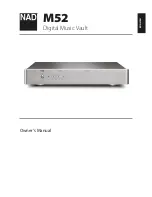
Instruction Manual
K SERIES Cryostorage System
IM: CryoCeK
Revision: 02
Approved by: CB
Page
7
of
87
IMPORTANT
The following safety precautions apply to the Worthington Industries K SERIES
Cryostorage System
(continued)
:
Inlet pressure should not exceed 1.5 bar / 152 kPa:
Higher pressures could result in damage to equipment and/or sufficient
depletion of oxygen in the atmosphere to cause dizziness,
unconsciousness, or even death.
The liquid nitrogen supply pressure at the inlet to the refrigerator should be in
the range of 0.7 bar / 69 kPa to 1.4 bar / 138 kPa for optimum performance.
Higher operating pressures will increase transfer losses and create excessive
turbulence of the liquid in the refrigerator which can generate false signals to the
liquid level controller causing the refrigerator to underfill.
In “liquid phase” storage applications, excessive turbulence can cause splashing
which could result in personal injury and/or damage to the refrigerator.
When installing piping or fill hose assemblies, make sure a suitable safety relief
valve is installed in each section of plumbing between shut-off valves. Trapped
liquefied gas will expand greatly as it warms and may burst hoses or piping
causing damage or personal injury.
A relief valve is installed in the refrigerator plumbing to protect the line between
the customer supplied shut-off valve and the refrigerator solenoid valve
.
Keep the location well ventilated:
A confined area without adequate ventilation can result in an atmosphere
that does not contain enough oxygen for breathing and will cause
asphyxiation, dizziness, unconsciousness, or even death.
Although nitrogen is non-toxic and non-flammable, it is an
colorless, odorless,
and tasteless gas, and
cannot be detected by the human senses, and will be
inhaled normally as if it were air.
Ensure there is adequate ventilation where your K SERIES Cryostorage System
is used and store liquid refrigerant supply containers only in a well ventilated
area.
In case of First Aid:
Have someone call for emergency medical services
immediately and do not leave victims of asphyxia alone at all times.








































